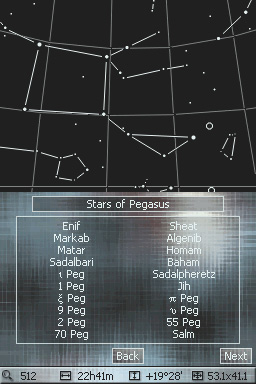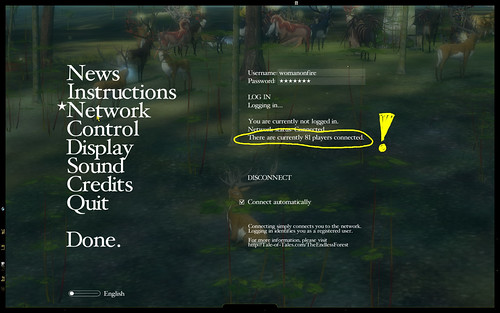Computer game is a misnomer. Sure, historically computer games have been electronic renderings of game concepts. And certainly a lot of developers of interactive entertainment insist on exploring game design as the basis of their work. That’s all very interesting, but in the mean time, computer games have evolved into a medium of their own.
So rather than dwelling on the things that computer games have in common with traditional games, we, at Tale of Tales, prefer to explore what is different about them, what makes computer games unique. We believe that only the exploitation of these unique properties will lead to the maturity of the medium. Here’s a little list of ways in which computer games are different from traditional games. Feel free to add.
1. Intimacy
Most traditional games pit human players against each other. This social aspect is so important that traditional games meant to be played alone are named after that very fact (Solitaire).
Most computer games, including many multiplayer ones, are played by single humans behind a machine. This is one of the most unique and powerful properties of the interactive medium. The intimacy between the game and its user creates a potential depth of mental exploration unseen before in any medium.
2. Stories are more important than rules
Traditional games can be highly abstract. Games like Chess, Go and Bridge are classics. Computer games, on the other hand, thrive on stories. Sure, Space Invaders and Pac Man are historical highlights. But would anyone want to trade in Myst, Tomb Raider, Ico, Half Life, Grand Theft Auto or The Sims for those?
Also, computer games feature characters. Creatures that we can empathize with, in whose behaviour we can recognize our own. Unlike the pawns and dice of traditional games.
3. Immersion
A traditional game can be absorbing. But you always remain an outsider. The game might enclose you in a Magic Circle but you always remain a manipulator of objects and rules that are outside of you. Computer games allow you to step into their worlds, to become part of the events. To some extent you become one of the pieces on the board, one that acts autonomously.
4. Not (just) for children
Games are traditionally considered to be for children. Probably because they are useful tools for learning. They tend to contain simple structures that are easy to understand. As we get older, the things we need to learn become more complex. Games don’t suffice anymore and we often turn to art for exploring ourselves and our surroundings.
The same adults that look down on those simplistic children’s games, are now moving joysticks and pressing buttons on game controllers in front of television sets and computer screens. These are not the same games!…
5. An artistic medium
Some people try to defend games as an age-old art form. But this is not a widespread belief. Games have their function in society but they are generally not considered very high on the cultural ladder. Computer games are different. They have an enormous impact on their users. They can lead to life-changing events. What we experience in computer games, stays with us, becomes engraved in our memory, becomes part of who we are.
6. Players as authors
Traditional games have strict rules. Because of this strictness, you can predict all possible outcomes of any game, based solely on analysis of the rules. Computer games, on the other hand, are much less predictable. While many of them still contain rules (although their strictness is fading with each generation), these rules tend to create options rather than diminish them. So much so that a player can play a game in ways that surprise even its creator. Players can bend the rules to create new games, overcome obstacles by simply combining rules and objects in unexpected ways and they can exploit bugs for fun. Many computer games take advantage of this creative potential and encourage the player to co-author the experience.
7. Aesthetics are more important than systems
You can play a perfectly satisfactory game with a few rocks and some sticks. It’s the activity of manipulating those objects that constitutes the experience. But computer games have such a strong desire for beauty, that they are one of the main driving forces behind the technology of the century. Hardcore gamers may pretend that the looks of a game don’t matter to them, but you won’t find many Halo-owners playing Wolfenstein3D. We want our games to be pretty so much that competition in an entire industry is based almost exclusively on how beautiful the products are.
8. Persistent social context
A traditional game constitues a context within which a social event takes place. Very often, games are used to create such an event. Families playing scrabble together. A son challenging his father to chess. Etcetera.
Computer games, while often played alone, have a much longer-lasting social impact. To some extent, one could say that the social element of games only starts when you stop playing, while in traditional games, the social situation dissolves when the game ends.
9. No losing
Contrary to traditional games, computer games cannot be lost. This is especially true for single player games. When people say they lost a computer game, they actually mean that they failed to accomplish a certain task. This often prevents them from making any further progress. So they give up. Nobody wins, nobody loses.
10. Cheating is allowed
In computer games, cheating is often as much fun as obeying the rules. Traditional games break instantly as soon as you start cheating. But computer games often include cheat codes that allow you to have unlimited money or be invulnerable, etc. Traditional games would dissolve instantly if the rules were broken like that, but computer games become all the more fun.




 I do love
I do love 

 I find that to be a really great thing to make for the DS. I hope development continues.
I find that to be a really great thing to make for the DS. I hope development continues.